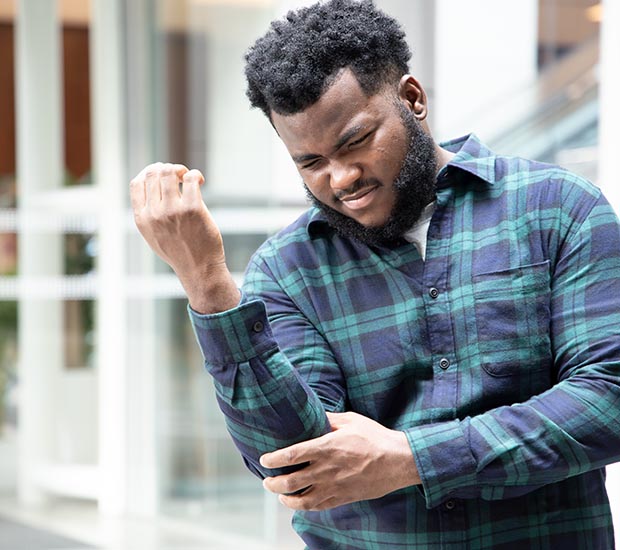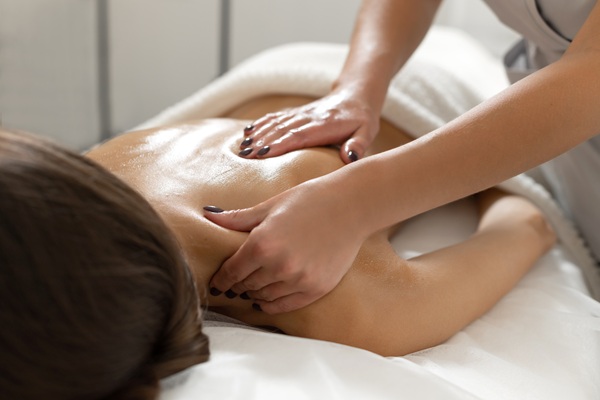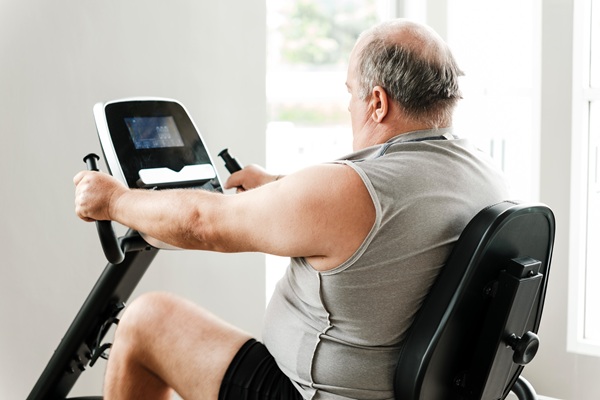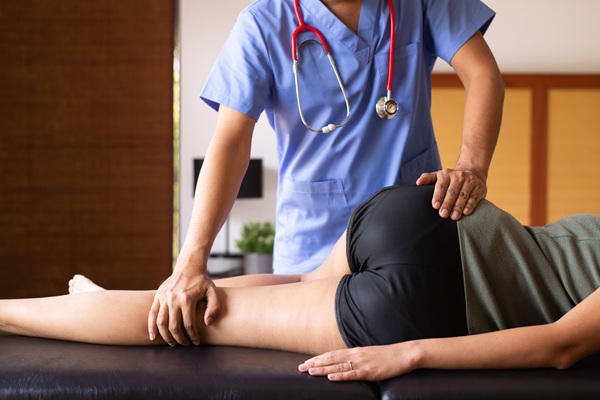Elbow Pain TreatmentNewport Beach, CA
The elbow is a multifaceted joint that allows you to do many different things, but once it is hurt, many sports and activities that you enjoy are off the table. Elbow pain can interfere with your everyday life. Physical therapy for elbow pain consists of various treatments that can help strengthen the muscles and structures of the elbow joint and provide a range of motion after an injury.
At Orange County Physical Therapy, we offer elbow pain consultations and treatments. Our team can diagnose your case to identify the root cause and customize a custom treatment plan to address the problem. To learn more about a procedure or schedule an appointment, call (949) 299-0297 today.
Understanding Elbow Pain
The elbow is “a hinged joint made up of three bones, the humerus, ulna, and radius.” The ends of each bone is covered in cartilage, a sticky, rubbery substance that protects the bones and keeps them from rubbing against each other. According to a 2021 article, the elbow is the most complex joint in the human body. The elbow’s primary functions are to provide motion of the upper and lower arm, allow for extension and lengthening, and facilitate movement of the hand.
Elbow pain can stem from a variety of different ways, most commonly overuse and injury. There are also different types of elbow injuries depending on the bones and structures they affect, the severity, and the overall health and strength of the arm.
Check out what others are saying about our Elbow Pain Treatment services on Yelp: Elbow Pain Treatment Newport Beach
Causes of Elbow Pain
Elbow pain typically occurs as a result of an injury or health condition, but can also occur due to overuse. For example, sports such as golfing, boxing, baseball, and tennis often result in an injury or wear-and-tear over time. Health conditions that can affect the elbow include:
- Arthritis
- Sprained or strained elbow
- Osteochondritis dissecans
- Cubital tunnel syndrome
- Radial tunnel syndrome
- Bone spurs
Common elbow injuries include:
- Fracture: A fracture in the elbow is nothing more than a crack or break in the bone. It can happen after a fall or if something lands on it in an improper way.
- Dislocation: A dislocation is not as bad as a fracture, but it hurts the same. This happens when the two bones that make the elbow become separated and need to be reset.
- Pain from throwing: Repetition is the biggest cause of elbow pain. This type of pain is common with anyone that uses a racquet or may play a sport that involves contact, like football or basketball.
- Medial Epicondylitis (Golfer’s Elbow): A condition that happens when a person golfs excessively. The repetition of the swing can cause the ligaments and muscles in the joint to become inflamed.
- Bursitis: A condition that affects the fluids that keep the joints lubricated. If these areas become inflamed any and all movement of the joint can become painful.
- Lateral Epicondylitis (Tennis Elbow): An injury that stems from constantly performing the same movements. The pain is real and can keep a person from wanting to participate in the sport any longer.
Symptoms of an Elbow Injury or Condition
Symptoms of an elbow condition or signs of an injury will vary depending on the area affected and its severity. Minor symptoms include slight to moderate pain, mild swelling, weakness, and reduced range of motion. Severe symptoms include severe and constant pain, swelling, numbness, tingling sensations, and a significant reduction in range of motion.
Elbow pain resulting from an injury may limit a person’s ability to perform basic tasks and, even more so, activities and sports. It also affects their ability to drive, which can cause many other lifestyle issues. Elbow pain should be diagnosed and treated, whether mild or severe, as the elbow is a frequently used joint and subject to wear and tear. Treating an injury or pain can reduce and often prevent further damage to the joint for longer periods.
Diagnosing and Treating Elbow Pain
To diagnose elbow pain, a doctor or therapist will apply some pressure on the joint to assess the location and severity of the pain. Elbow pain usually strikes most when the arm is outstretched, and the wrist is flexed towards the inner palm. In some cases, X-rays or MRIs may be taken to properly diagnose more complicated cases.
Physical therapy is a commonly prescribed treatment for elbow pain as it can help restore function to the joint, manage inflammation, and reduce pain. Some of the exercises used in physical therapy include the weighted wrist extension, weighted wrist flexion, and weighted wrist rotation, as well as ball squeezes and towel twists. These exercises, along with massage therapy, help to improve function, range of motion, strength, and flexibility in the elbow joint and can be done by anyone to maintain a good elbow.
Benefits of Physical Therapy for Elbow Pain
Physical therapy provides a plethora of benefits for pain in any region of the body. It is primarily done to relieve pain, stress, and tension in the joints and muscles, improve function, enhance range of motion, and reduce inflammation. Physical therapy can also reduce or eliminate the need for medication and surgery. In post-surgery patients, physical therapy facilitates faster recovery and healing time.
Physical therapy for elbow pain can allow the elbow joint to fully regain strength, flexibility, and motion. This can help athletes get back to the sport they love. Sports therapy may be coupled with treatment for elbow pain to hasten the process. Whether an athlete or not, we will curate a custom treatment plan to address the cause of the injury or condition affecting the elbow.
Schedule a Visit Today
Elbow pain consultations and treatments are available at our office. The Orange County Physical Therapy team looks forward to treating you and helping you get back to doing what you love. Call our office at (949) 299-0297 to learn more or schedule an appointment.
Frequently Asked Questions About Elbow Pain
Q. How can I assess the severity of my elbow pain?
A. The first sign of any injury or condition will likely include pain, so you can measure the severity depending on how severe the pain is. Other signs include bleeding, swelling, burning or cold sensations, tingling, and difficulty moving the arm or elbow joint. In severe cases, a patient may not feel pain or other symptoms at the beginning from shock. In any case, elbow pain should be diagnosed by a medical professional right away.
Q. What are the most common elbow injuries?
A. Some of the common elbow injuries include Tennis Elbow, Golfer's Elbow, Bursitis, Tendonitis, tendon rupture, and sprains of the muscles or tendons. Injuries can help with overuse and improper extension, lifting, and stretching as well.
Q. How does overuse affect the elbow?
A. Repetitive movements and motions put stress on the elbow joint and its structures. These motions include overhand throwing, pushing or pulling, and twisting or bending the arm. Most sports cause overuse of the elbow joint, especially when done without therapy or pain managing exercises.
Q. What are the different treatments for elbow pain?
A. In most elbow injuries and conditions, treatments include rest, cold compresses, anti-inflammatory medications, and physical therapy. At times, immobilization devices such as a brace or cast, are used. In severe cases, surgery may be necessary.
Q. What physical therapy treatments are available for elbow pain?
A. Some physical therapy treatments for elbow pain include manual therapy, massage therapy, joint mobilization or manipulation, and stretching and strengthening exercises. Each patient’s case is different, so we will curate a specialized treatment plan just for you and your unique condition.
Contact Us
Orange County Physical Therapy OCPT is located at 2135 Westcliff Dr. Suite 203 Newport Beach, CA 92660.





